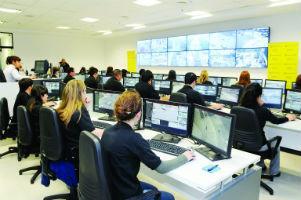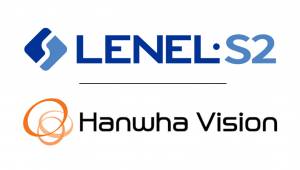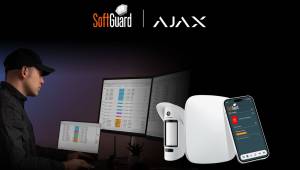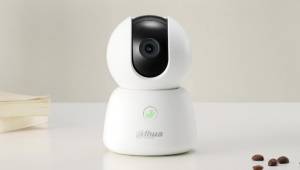 As I explained in the last edition, we all know that a monitor is not required to see each camera we place, here we will continue to break down the appropriate number of these to obtain optimal results.
As I explained in the last edition, we all know that a monitor is not required to see each camera we place, here we will continue to break down the appropriate number of these to obtain optimal results.
by Germán Alexis Cortés H.
The operator sometimes becomes the employee who first sees the claims in the company, but not the one who controls or avoids them, as we all naively want.
There are conditions that alter human performance and affect the number of monitors. To keep lighting the flame, let me tell you that all these statistical percentages (the reality is sometimes more crude), are based on situations with good conditions. So the number of monitors, which is highly linked to the number of operators, is seriously affected by other factors such as:
* Complexity of the Scene. Especially when you're trying to spot small things.
* Scenes with permanent movement (mobile cameras or places where movement is a constant).
* Movement, in scenes adjacent to or close to the monitor or the place where the concentration should be set.
* Control center lighting, operator comfort, ergonomics.
* High concentration in a quiet environment.
* Low anxiety, by freeing you from direct responsibility. This is the job of supervisors.
* High sharpness and resolution. Good handling of Brightness and Contrast on the monitor.
* Existence of Automatisms for the visualization and recording of the video. It's having the security of seeing what you really need to see.
* Use of appropriate controllers to minimize operation tasks and concentrate on analyzing the scenes.
* Adequate staff rotation shifts. Provide incentives to avoid accidents, or detect in flagrante delicto.
* Quality in the scene generated by the cameras (no brightness, good dynamic range, excellent dynamic and static resolution, perfect focus, suitable lenses, appropriate lighting)
* Existence of very wide scenes, in areas with many aspects to control, in distant, medium and close planes. This makes the operator's job very difficult and requires a high-resolution image monitor.
* Requirement to the operator for the management of other systems (access, alarms, communications)
* Presence of normal distractors such as making reports, attending to bosses and supervisors, visitors, co-workers.
Monitor resolution
The resolution of the monitors must be at least 40% above the maximum resolution of the cameras that will be displayed. This criterion works for both analog systems (TVL) and fully digital systems (horizontal pixels by vertical).
For example, if I have 380 TVL and 520TVL cameras, I must take the maximum resolution and increase the margin by 40%. Therefore those cameras I must see on monitors of at least 870TVL.
Display size and distance
The vertical angle where the monitors should be found should not be greater than 25 degrees and horizontally should not be greater than 50 degrees, counted from the direct line of our eyes. Therefore they are serious design flaws, those control centers with huge walls with many monitors and pretend that everything is controlled by a single operator routinely. The more monitors there are, the more distance I must take to see the totality of the monitors, but then I lose the resolution and sharpness of the small details.
The appropriate viewing distance is between 1.5 and 5 times the diagonal size of the monitor. However, it all depends on what you want to see in the scene.
Studies and tests at the video level indicate that an object can be seen clearly, at a maximum distance of 16 times its height.
Then the system designer must do the corresponding analysis, planning what is required to see in each scene. For example, for applications where the CCTV system is used as a detection, whose objects can be 10% of the height of the image, we have the following calculation: Suppose we use a 42-inch monitor, then remembering the Pythagorean theorem and making a rule of three, we see that the height of that monitor is 52 cmt. therefore the smallest object I can detect is 5.2 cmts. then you shouldn't see that image at a distance greater than 84 cmts.
But if my system was planned and calculated to identify a person, whose face should be at 40% of the image, that is, with a size of 21 cmts on the same monitor, I can see it at a distance of 3.36 meters. This monitor will be able to see it at a maximum recommended distance of 5.3 meters and in no case exceed 8.3 meters.
To watch video on CCTV systems, a normal custom is to place the workstations of the operators, following the rule of 2.5 times the size of the monitor.
Practical example
Suppose we have a factory with a CCTV system composed of 80 cameras. The analysis of scenes determined that in the hour of entry in the morning and afternoon 22 cameras are required to be seen, that in a routine time of morning and afternoon 12 cameras are required to be seen and that at the end of the afternoon 35 cameras must be seen.
At night and early morning it is necessary to see seven critical cameras and of course all the images where a special situation occurs. Every three weeks there is a special day where production is loaded for export and we must critically look at some production and packaging processes that support BASC. In those moments in total we must visualize 42 cameras that are essential.
The current market, without training and with total negligence and technical ignorance, would deliver these possible solutions:
Provider 1.
3 32-channel video recorders. 3 Monitors.
Provider 2.
5 16-channel video recorders. 5 Monitors.
Provider 3.
1 Server that acts as NVR for 96 channels. 2 Monitors.
Provider 4.
5 video recorders, 1 matrix of 128x8, 2 monitors of 42 inches and 6 of 20 inches.
Provider 5.
1 server as a 128-channel NVR with Virtual Matrix software. 6 Set-top boxes and 6 20-inch monitors.
Analysis
It is obvious that the critical point is presented every three weeks with the 42 images that must be monitored simultaneously. Let's remember that the other 38 cameras there is no need to see them at that time, unless a special situation occurs. Although we already know that all images are very important, we must prioritize. So let's separate the continuous view cameras into three types: High, Medium and Low Importance.
Suppose that after a new analysis, we have the following results: High: 6 – Medium: 15 – Low: 21. It is important to note that these determinations should always be made together with the end user, who is ultimately the one who knows their needs best. But don't let him just make the decisions. Remember that we must always be advisors throughout the process and more in the design phase.
The cameras of maximum importance must be seen on a monitor for each one. Those of medium importance, in a monitor for every four (4) cameras and those of low importance in a very large monitor but with the screen divided into nine (9), twelve (12) or 16 video channels.
Therefore I need: four (4) monitors for high-importance cameras, four (4) monitors for medium-importance cameras, and two (2) large monitors for low-importance cameras.
We also need two (2) monitors to receive the images generated by the automatisms of our systems, where images from the 38 cameras that are not essential at this time can be presented.
Finally the operator must have a monitor that handles it at will, that is, that places there the image that requires more attention at some point according to their own taste and criteria.
This gives us a subtotal of 13 monitors. It is obvious that when we are during the export process at least two (2) operators will be required for the most important cameras and another two for the rest, for a total of four, therefore three (3) more monitors are required, counting the spot monitor for each operator. This gives us a total of 16 outputs to monitors.
In the daily routine, the most critical case is 35 cameras at the end of the afternoon; that can certainly be observed on the 16 calculated monitors. However, there you must also do the analysis of importance, place hierarchies and assign monitors with unique images or monitors from a video recorder that divides the display. You can then use the large monitors and some spots close to the operator. Due to the number of simultaneous scenes, a second operator will be necessary in these hours.
At night routinely, the seven (7) cameras can be viewed on two (2) large monitors, using a single operator, plus some spot monitors, automation and support.
As we can see, none of the hypothetical suppliers that were contacted, gave an adequate visualization solution, simply because no one demanded the requirements of operation, operation and because in many cases there is no detailed design of the solution. The best solution presented, can be that of the provider four (4) or five (5), because it includes an array, but it definitely fails with the number of outputs and monitors.
A suitable solution could be:
Provider 6.
6 DVRs of 16 channels, 1 Matrix of 128x16, 4 Monitors of 42 inches and 12 of 20 inches. For an Analog system.
3 NVR of 32 channels, Virtual Matrix of 80x16, 4 Monitors of 42 inches and 12 of 20 inches. For an IP system.
In real life, as the operation of the system was not planned, nor were the appropriate monitors requested, half-baked solutions are acquired, which do not allow to take adequate control of the needs of the company, generating feelings of frustration and dissatisfaction.
Trending
In installations of less than 32 cameras and / or two (2) video recorders ... it is difficult to place all the planned monitors, due to limitations in hardware and budget. However, many professionals solve this situation by adding video output cards to the main server.
In installations with a greater number of cameras and / or recorders, the presence of a matrix (analog or virtual) is necessary and then all the concepts learned are put into practice.
In very large and complex installations, there is a videowall of four (4) modules for group of operators and a larger videowall for the entire control room. A widespread operational technique is to work in pairs of operators sharing a large monitor and each with a dedicated monitor (spot) who control it to their liking.
Finally remember that in large systems not all monitors should be in the control room. A distributed video system is preferred.
In other installments, we will talk about the technologies of the monitors and the main features that are required to work in the demanding world of security.
* Germán Alexis Cortés H. is a Colombian Electronic Engineer, with a postgraduate degree in Engineering Management Systems. Consultant of the National Institute of Standards and Technology – NIST, in Electronic Security and Building Automation. CCP of ASIS, and CISSP of ISC2. He has over 20 years of experience in the electronic security industry. Renowned lecturer and university professor on high-tech issues at the Latino level. He has been a director of several companies in the sector and is currently a partner and directs Insetrón Ltda, an engineering and technical consulting company in electronic network projects for security, communications and automation. He has successfully participated in more than 150 projects at the Latino level.
























Leave your comment